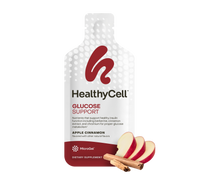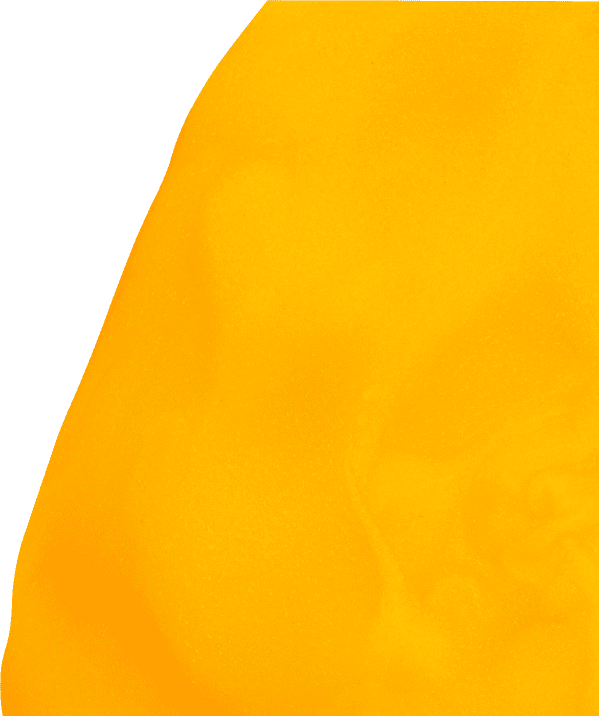Article at a Glance
- Riboflavin, vitamin B2, is one of 13 essential vitamins you need in your diet.
- Most dietary sources rich in riboflavin are found in meat or dairy food groups. Vegans, vegetarians, and those following a plant-based diet may find it useful to use nutrition supplements to receive adequate levels of this nutrient.
- Riboflavin has no known toxic and harmful side effects, but deficiency can lead to ariboflavinosis.
TMI alert! If you take a vitamin B complex nutrition supplement, chances are you noticed neon yellow swirled around the toilet after you relieved yourself. This startling color is from the essential vitamin, riboflavin. Although you may not be used to seeing this color after you use the facilities, it is completely harmless as it is merely the excess of the vitamin your body could not absorb. Read on to learn more about riboflavin, why you need it, and how you can efficiently absorb this vitamin so it doesn’t turn your urine bright yellow!
What Is Riboflavin?
Riboflavin, is one of the 13 essential vitamins needed in your diet because your body cannot make enough on its own.
Like all B vitamins, riboflavin is water-soluble so it dissolves in water. This dissolution allows your body to easily flush out any excess instead of storing it in your liver or fat tissue.[1]
Why You Need Riboflavin
Riboflavin is essential for many of your body’s physiological functions:[1,2,3,4]
- Contributes to energy metabolism, production, and helps your body carry out your daily activities
- Involved in cellular health, such as cell growth, development, and function
- Research suggests it can prevent migraines due to its major role in mitochondrial function
- Supports cardiovascular health by lowering blood pressure and controlling levels of the amino acid homocysteine, which contributes to cardiovascular disease prevention
Where to Get Riboflavin
Dietary sources rich in riboflavin include:[1,2,7]
- Beef
- Chicken
- Eggs
- Dairy
- Mushrooms
- Leafy, green vegetables
- Oats
Animal sources of riboflavin are more efficiently absorbed than plants.[1] As most riboflavin rich foods are found from animal sources, it is useful for vegans or vegetarians to eat higher levels of fortified cereals or to use a nutritional supplement. Supplementing your diet with riboflavin using MICROGEL™ technology is best for optimal absorption. This delivery system allows you to fully absorb nutrients into your bloodstream and then into your cells, where they work to improve health.
The Forms of Riboflavin
The majority (90%) of dietary riboflavin is found in these two compounds:[2]
- Flavin mononucleotide (FMN) or riboflavin-5-phosphate
- Flavin adenine dinucleotide (FAD)
The bioavailability between FMN and FAD is about the same, however, your body must convert both compounds into the free form of riboflavin for absorption.[1]
How Much Riboflavin Do You Need?
Everyone is different, and certain factors such as your age, sex, or health will affect your unique nutritional needs differently than someone else. To provide a general guide, the Food and Nutrition Board (FNB) establish the Recommended Dietary Allowance (RDA) to meet the needs of most healthy individuals. The RDA for riboflavin in both men and women range:[6]
- Infants (0 – 12 months): 0.3 – 0.4 mg/day AI
- Children (1 – 8 years): 0.5 – 0.6 mg/day
- Adolescents (9 – 18 years): 0.9 – 1.3 mg/day
- Adults (19+ years): 1.1 – 1.3 mg/day
- Pregnant and nursing women: 1.4 – 1.6 mg/day
Specific groups may need to be more mindful when evaluating vitamin needs. If you are pregnant or nursing, be sure to talk with your doctor about receiving adequate levels of riboflavin to protect your baby from preeclampsia and other birth defects.[2,8]
If you have a preexisting health condition, concern, or take prescription medication, it’s important to talk with your doctor or registered dietitian about your nutrition, especially when choosing which supplements and dosages are optimal for your health.
Toxicity
Riboflavin is a water-soluble vitamin that is easily flushed from your body rather than being stored in your liver or fat tissue. It’s natural color is a fluorescent yellow, and in turn can change your urine to a bright yellow.[1,2] This is the only known and unharmful effect of having too much riboflavin. As riboflavin has no known toxic effects, a tolerable upper intake level (UL) has not been established.[1] A tolerable upper intake level is the maximum daily consumption level that may cause an adverse event.
Riboflavin Deficiency — What are the Symptoms?
Riboflavin deficiency, ariboflavinosis, is rare within the US, but more commonly seen in developing countries or in people who don’t eat enough dairy and meat.[2,5] Vegans, vegetarians, and athletes who follow a plant-based diet are particularly at risk for developing deficiency as many riboflavin rich foods are eliminated in their diets.[2] Those with alcohol or drug addiction or diagnosed with hyperthyroidism are also at risk of developing a deficiency.[1,2,6]
Symptoms of riboflavin deficiency include:[1,6]
- Dermatitis
- Mouth sores
- Tongue inflammation
- Oral inflammation
- Confusion
- Fatigue
If deficiency is left untreated, more serious adverse effects such as cataracts or anemia can develop.[2]
Riboflavin in Healthycell Products
Bioactive Multi — Best for absorption!
The form of riboflavin contained in Bioactive Multi is riboflavin-5-phosphate. The dosage of riboflavin is 1.3 mg, which satisfies 100 percent of the Daily Value (%DV).
The form of riboflavin contained in Healthycell Pro is riboflavin-5-phosphate. The dosage of riboflavin is 4.5 mg in the morning formula and 4.5 mg in the evening formula, for a daily dosage of 9 mg, satisfying 530 percent of the Daily Value (%DV).
The form of riboflavin contained in Healthycell is riboflavin and riboflavin-5-phosphate. The dosage of riboflavin is 4.5 mg in the morning formula and 4.5 mg in the evening formula, for a daily dosage of 9 mg, satisfying 530 percent of the Daily Value (%DV).
Conclusions and Recommendations
- Riboflavin contributes to heart health, cellular function, and energy production.
- Too much riboflavin can turn urine to a bring yellow color, but there are no known toxic side effects.
- Nutrition supplements that use MICROGEL™ technology are best for optimal riboflavin absorption.
References
1. McGuire, Michelle, PhD, and Kathy Beerman A., PhD. “Chapter 10 Water-Soluble Vitamins.”
Nutritional Sciences: From Fundamentals to Food. 2nd ed. Australia: Thomson/Wadsworth,
449-451. Print.
2. “Riboflavin — Health Professional Fact Sheet.” National Institutes of Health. U.S. Department of Health & Human Services, 11 Feb. 2016. Web. 17 Oct. 2016.
3. Wilson CP1, et al. Riboflavin offers a targeted strategy for managing hypertension in patients with the MTHFR 677TT genotype: a 4-y follow-up. Am J Clin Nutr. (2012)
4. McNulty H1, et al. Riboflavin lowers homocysteine in individuals homozygous for the MTHFR 677C->T polymorphism. Circulation. (2006)
5. Powers, Hilary J. “Riboflavin (vitamin B-2) and Health1,2.” The American Journal of Clinical Nutrition77.6 (2003): 1352-360. American Society for Clinical Nutrition. Web.
6. Brasaemle, Dawn, PhD. “Thiamin Niacin Riboflavin Lecture.” Rutgers University – Riboflavin.
New Brunswick. 2015. Lecture
7. Marcason, Wendy, RDN. “What Are B-Vitamins and Folate?” Ear Right. Academy of
Nutrition and Dietetics, 14 Dec. 2015. Web. 14 Oct. 2016.
8. Balch, Phyllis A., CNC. Prescription for Nutritional Healing. 4th ed. New York: Avery, Print.




